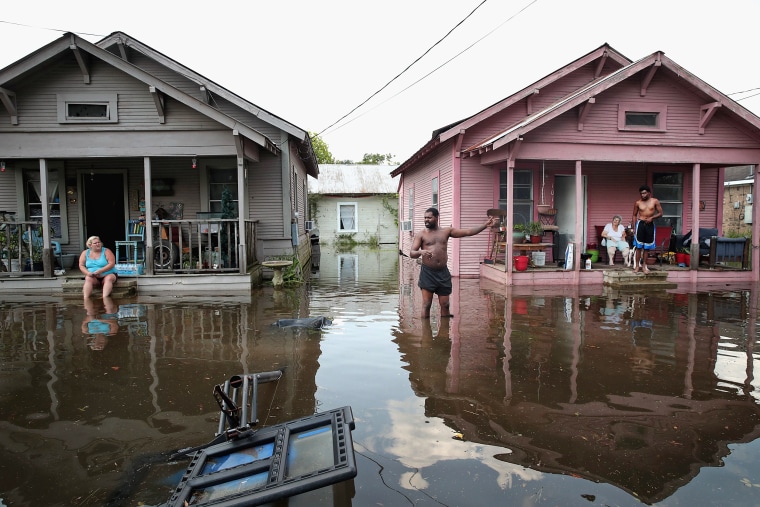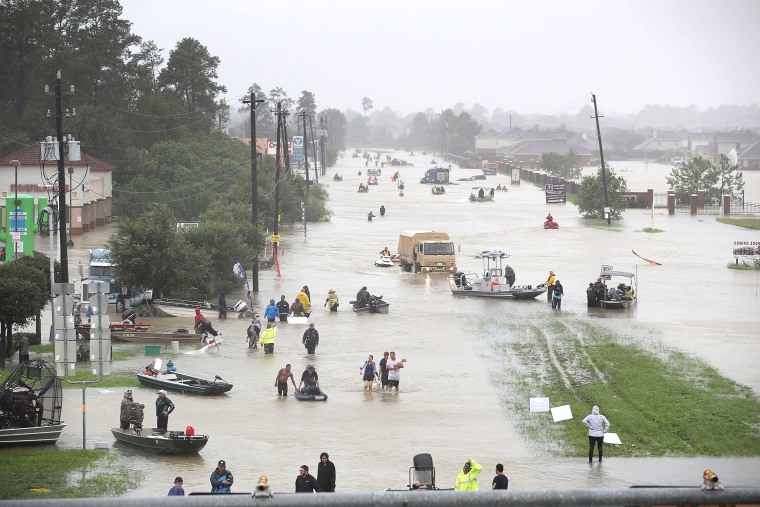A cluster of particularly destructive natural disasters in 2017 has pockmarked the nation with devastation. Numbers for Hurricanes Irma, Harvey and Maria have yet to be finalized, and 2017 is already on track to reach the record for the most billion-dollar climate disasters in the nation’s history, according to an October report from the National Centers for Environmental Information (NCEI).
To date, 2011 has netted the most billion-dollar natural disasters — a record-breaking 16. Now, a new wave of wildfires in Southern California, which by Friday had devoured about 132,000 acres, may also help push 2017 into the top spot.
From January to September of 2017 alone, the nation experienced two floods, a freeze, seven severe storms, three tropical cyclones, a drought and wildfire — all 15 of which cost the nation over a billion dollars in insured and uninsured damages each, according to NCEI. In just the first weeks of 2017, 79 confirmed tornadoes touched down in three days across the southern United States, totaling $1.1 billion in losses.

Not a month has gone by since without a major weather disaster wreaking havoc on some region of the nation.
The wildfires that burned through Sonoma Valley just two months ago resulted in $9.4 billion worth of insured damages, the California Department of Insurance announced Wednesday. In just a few days, the current blaze has already scorched a greater area.
The frequency of billion-dollar climate disasters has been rising steadily over the past few decades. From 1980 to 2016, the annual average was a mere 5.5 disasters. In the last five years, that average has nearly doubled.
Insurance companies and government agencies will foot the bill for a fraction of these losses. In 2016, insurers paid around $54 billion globally for natural disaster claims, per Aon Benfield’s annual climate and catastrophe report. This was close to double what they shelled out the previous year, yet it only accounted for 26 percent of total economic losses.
Related: 1st death in California wildfires reported, firefighters make progress
The remainder — mostly affecting the uninsured and business owners — largely remains lost. The uninsured cannot file a claim for property damage or livestock lost. Businesses forfeit whatever revenue they lose when forced to temporarily shut down.

The NCEI, a branch within the government-run National Oceanic and Atmospheric Administration (NOAA), cites a rise in population, poorly-built infrastructure in vulnerable areas and climate change as the drivers behind this uptick in overall costs. However, climate experts point to climate change as the primary perpetrator.
“I don’t think there is any question. It is clear that climate change is causing more destructive extreme weather events,” said Michael Mann, a climatologist, geophysicist and current director of the Earth System Science Center at Pennsylvania State University, in an email to NBC.
Mann noted that any vulnerabilities exposed by population increases and construction in vulnerable areas is offset by “better engineering, sturdier buildings, more resilient infrastructure and implicit adaption.”
“What’s most worrying is that the increase we’ve seen so far is likely just the tip of the iceberg,” warned Mann. “We will likely see far more damaging extreme weather events if we do not reduce carbon emissions decisively in the years ahead.”